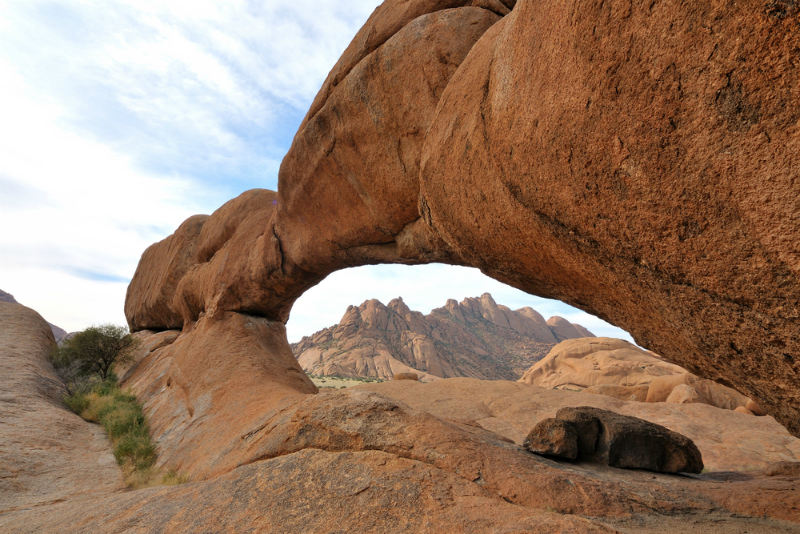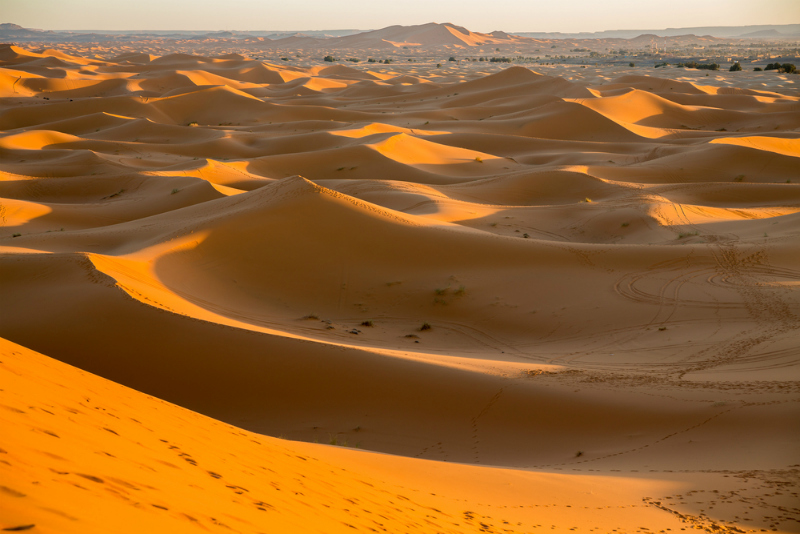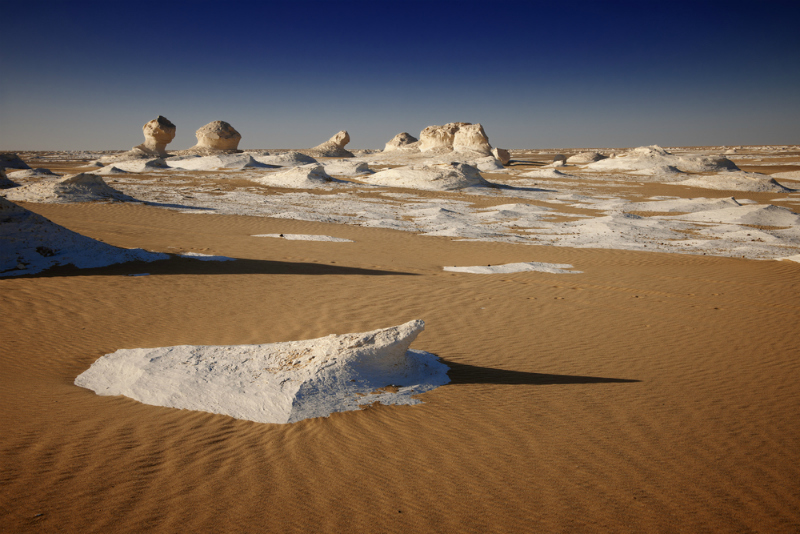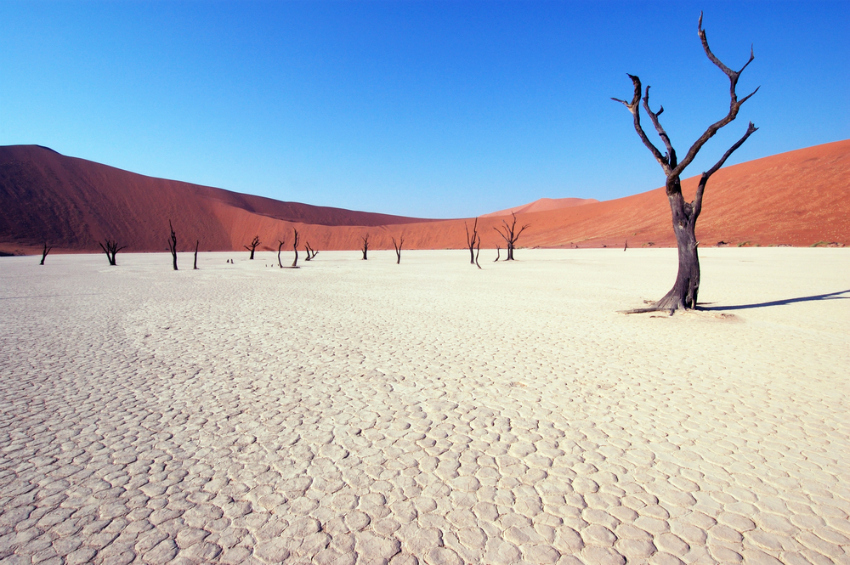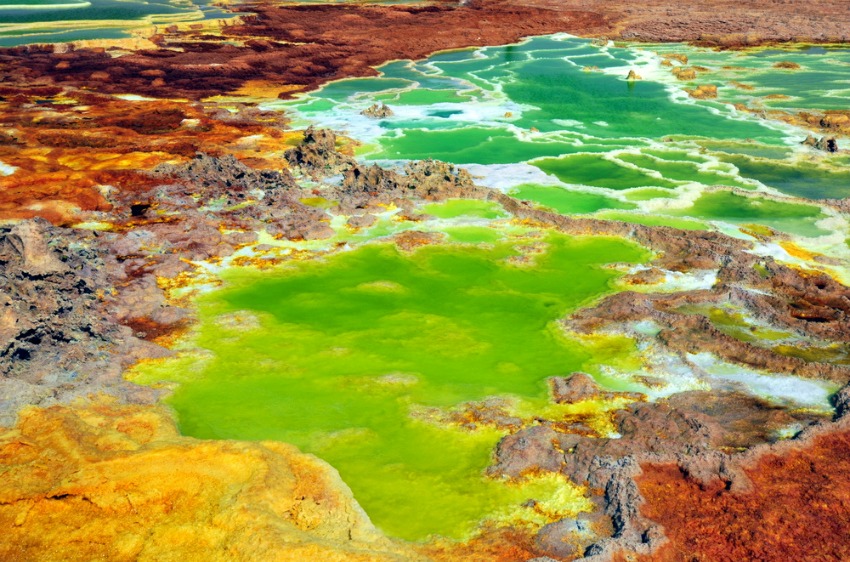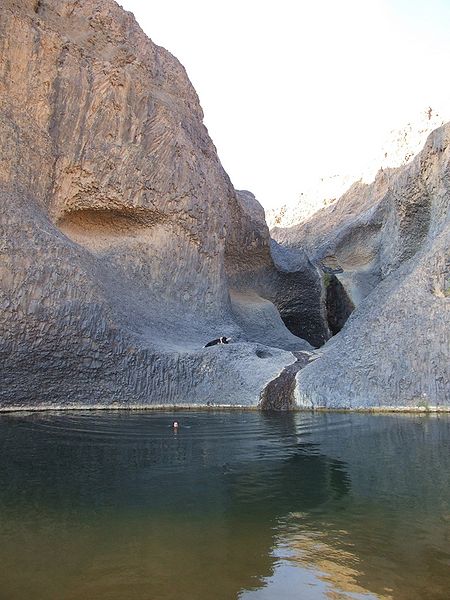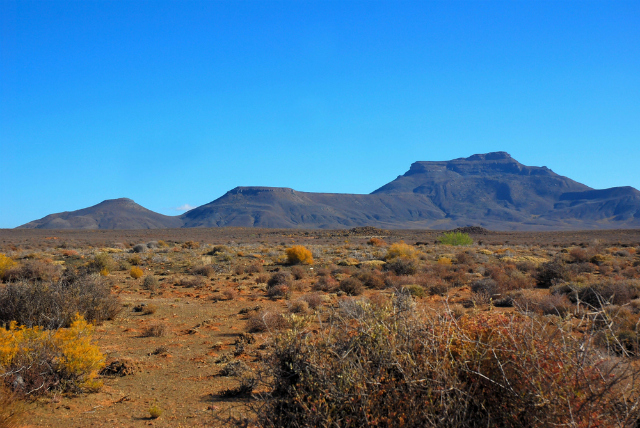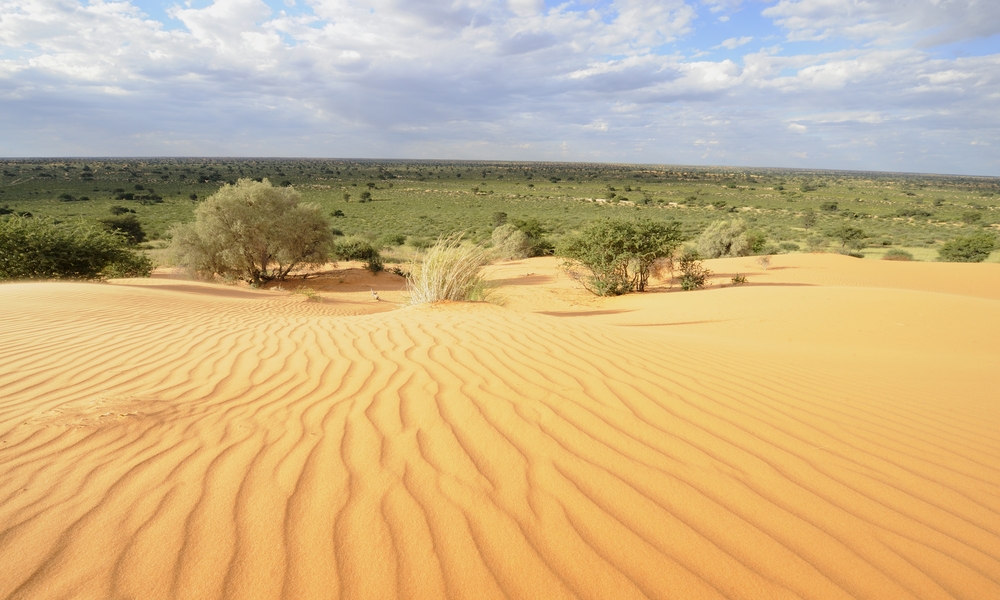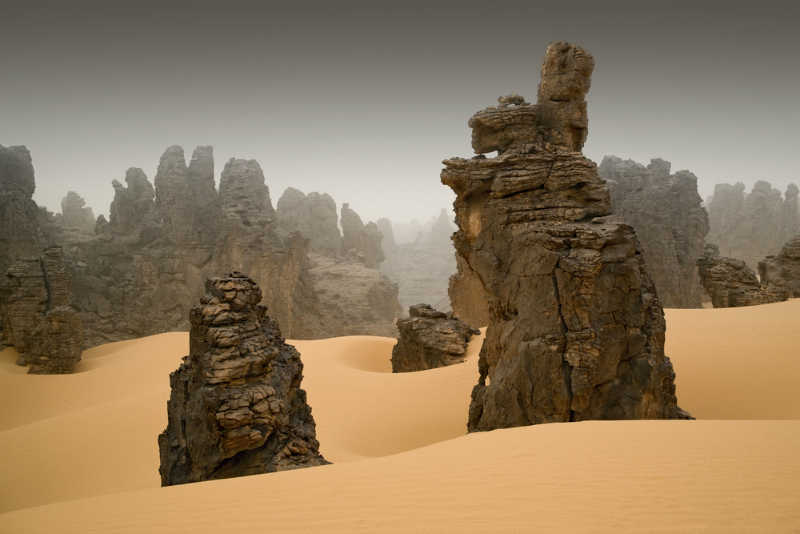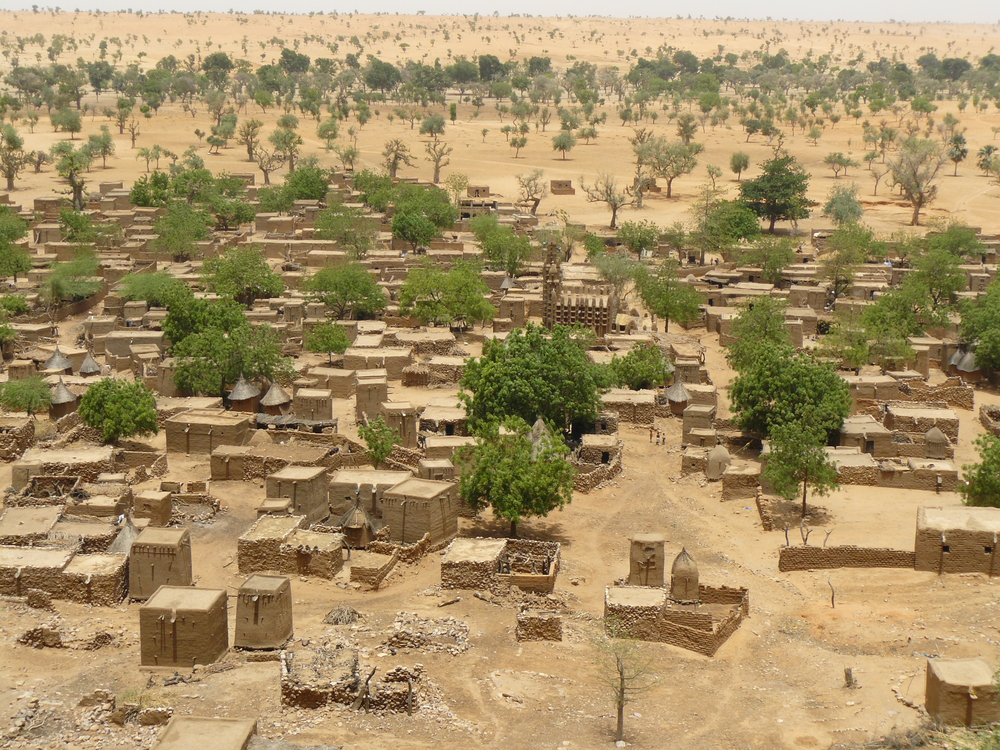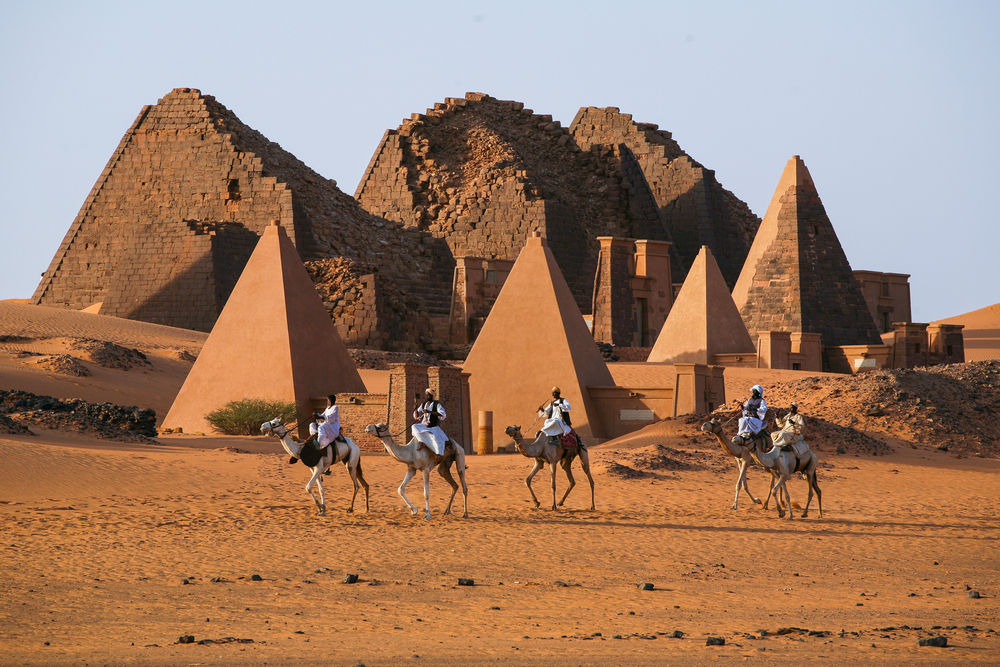Deserts are underrated. They suffer a bad reputation as places of crippling heat, hostile to life, and devoid of redeeming characteristics. But we shouldn’t disrespect the desert, because it is so much more than that. From the Sahara to the Kalahari to the Namib, the truth is that Africa’s deserts are full of stunning geological formations, unique animals, hardy plants, and sweeping dunes. Here’s a roundup of 15 of the most stunning deserts in Africa, which will surely make you reconsider your opinion of them.
1) Makgadikgadi Pans, Botswana
This massive area of bone-dry salt pans in southern Botswana is supposedly so quiet you can hear the blood rushing through your veins. Sitting in the Kalahari Desert, the landscape is not very welcoming, formed by a giant lake that dried up a million years ago. However, if the winter gets a heavy rain, the area sprouts bright green grass and welcomes wildlife like zebra, wildebeest and flamingoes.
2) Draa Valley, Morocco
Stretched out between the Atlas Mountains and the dunes of the Sahara is one of Morocco’s most dramatic landscapes, the Draa River Valley. Here the Draa River cuts through a long, dry desert valley which is punctuated by a series of oases, date plantations, and fortified villages whose history stretches back thousands of years, making it one of the oldest occupied deserts in Africa.
3) Sossusvlei Dunes, Namibia
The name means “the gathering place of water” but don’t be fooled — you’ll want to pack plenty of H2O to visit one of Namibia’s most popular attractions. The dunes have built up over millions of years, and are comprised of material deposited by the Orange River into the Atlantic. That material then travels north and returns to land via the surf.
4) Spitzkoppe, Namibia
The Spitzkoppe is home to numerous granite peaks in the Namib Desert, with the tallest one reaching almost 1,800 meters. It’s a popular destination for bouldering, rustic cave camping and multi-day safaris.
5) Sahara Dunes, Morocco
This is the part of the Sahara most welcoming to visitors, accessible from the northern part of Morocco. Let Berbers guide you on a hike from the town of Zagoura, or camp in Tazzarine — a destination famous among runners for the yearly Marathon des Sables.
6) White Desert, Egypt
White Desert National Park, which is located about 45km north of the oasis town of Farafra, gets its name from the giant, surreal rock formations made from white chalk. These stark monoliths, which were carved by sandstorms over thousands of years, contrast sharply with the brilliant orange dunes.
7) Deadvlei, Namibia
Deadvlei is a stark white clay pan adjacent to the Sossusvlei dunes in Namib-Naukluft National Park. It’s full of 900-year-old skeletons of camelthorn Acacia trees. The combination of the dead trees, white pan, red dunes and blue sky make for outstanding photos, and the trip over the dunes is well worth the walk. If you can make it to the peak of the dune known as “Big Daddy” — a hike of around 45 minutes — you’ll be rewarded with panoramic views around the area and some amazing photos.
8) Danakil Depression, Ethiopia
This unique geologic formation at the intersection of Ethiopia and Eritrea is not strictly a desert, but it’s one of the hottest, driest and starkest places on earth. The craggy rocks, mineral pools and vast salt deposits (left behind when ancient seas evaporated) combine to create an eerie, otherworldly landscape that resembles an above-water coral reef. The area is very hard to get to, but for the intrepid, a few companies offer 4×4 tours to certain sections.
9) Timia, Niger
In wandering the seemingly endless sand dunes of the Sahara, it seems impossible to imagine such a peaceful and refreshing sight such as the Timia Oasis. Around it sprouted a small town and a Tuareg community of almost 14,000 people. The area sustains fruit trees, a virtually unheard-of commodity in the middle of a desert. Amid arguably the least hospitable terrain, you’ll find a network of lush gardens with oranges and pomegranates, date palms, and a variety of other garden produce. The Tuareg have been able to capitalize on the draw of the oasis, allowing tourists to pick the fruit for a fee and selling the goods of their gardens.
10) Great Karoo, South Africa
Like the outback of Australia, the Great Karoo is South Africa’s vast, dry heartland. Despite its seeming emptiness, this 400,000 square-kilometer semi-arid desert is full of interesting features and attractions: craggy mountains, vibrant wildflowers, quaint colonial towns, and unique wildlife. Visitors come to see the national parks, attend the many small-town festivals, go fossil-hunting, and stargaze under the big sky.
11) Kalahari, Northern Cape, South Africa
The Kalahari spans three countries and covers 350,000 square miles (900,000 km sq). Dry and arid, it encompasses the Makgadkadi Pan in Botswana, the Etosha Pan in Namibia, and a large part of northern South Africa. It is so large and diverse that it has numerous climate zones, each with its own level of rainfall, vegetation and wildlife.
12) Southern desert, Libya
Few people know that there are remains of ancient volcanoes in the southern Libyan desert. This barren area near the Chadian border rarely sees tourists, both by virtue of its remoteness, and because of the ongoing political turmoil in the country.
13) Sahel desert, Mali
The Sahel is a zone that marks the transition between the Sahara desert to the north, and savanna lands to the south. It stretches right across Africa from west to east, and encompasses parts of Mauritania, Gambia, Senegal, Mali, Burkina Faso, Algeria, Niger, Nigeria, Cameroon, Chad, Sudan and Eritrea. The people who live in the Sahel tend to be semi-nomadic, moving livestock from north to south with the rains.
14) Mocamedes Desert, Angola
This desert starts at the border of Namibia to the south, and spreads north for hundreds of square miles. It is almost totally uninhabited except for coastal areas, where people make a living from fishing, and the town of Namibe where iron ore is smelted. If you’re lucky you’ll encounter Welwitschia mirabilis, a unique plant with two gigantic leaves that sprawl across the desert floor.
15) Nubian Desert, Sudan
The Nubian refers to the eastern portion of the Sahara, between the Nile river and the Red Sea. Vast and dry, it gets less than 12cm of rain per year, and its inhabitants are primarily Bedouins and farmers.
Related content on AFKTravel:
The Living Desert: 10 Small, Miraculous Critters Of The Namib
Dreamy Desolation: 10 Instagrams That Show Off The Beauty Of Africa’s Deserts
Dynamos Of The Desert: 10 Things You Didn’t Know About African Camels
Want to discover the finer side of Africa? Sign up for our weekly newsletter.



